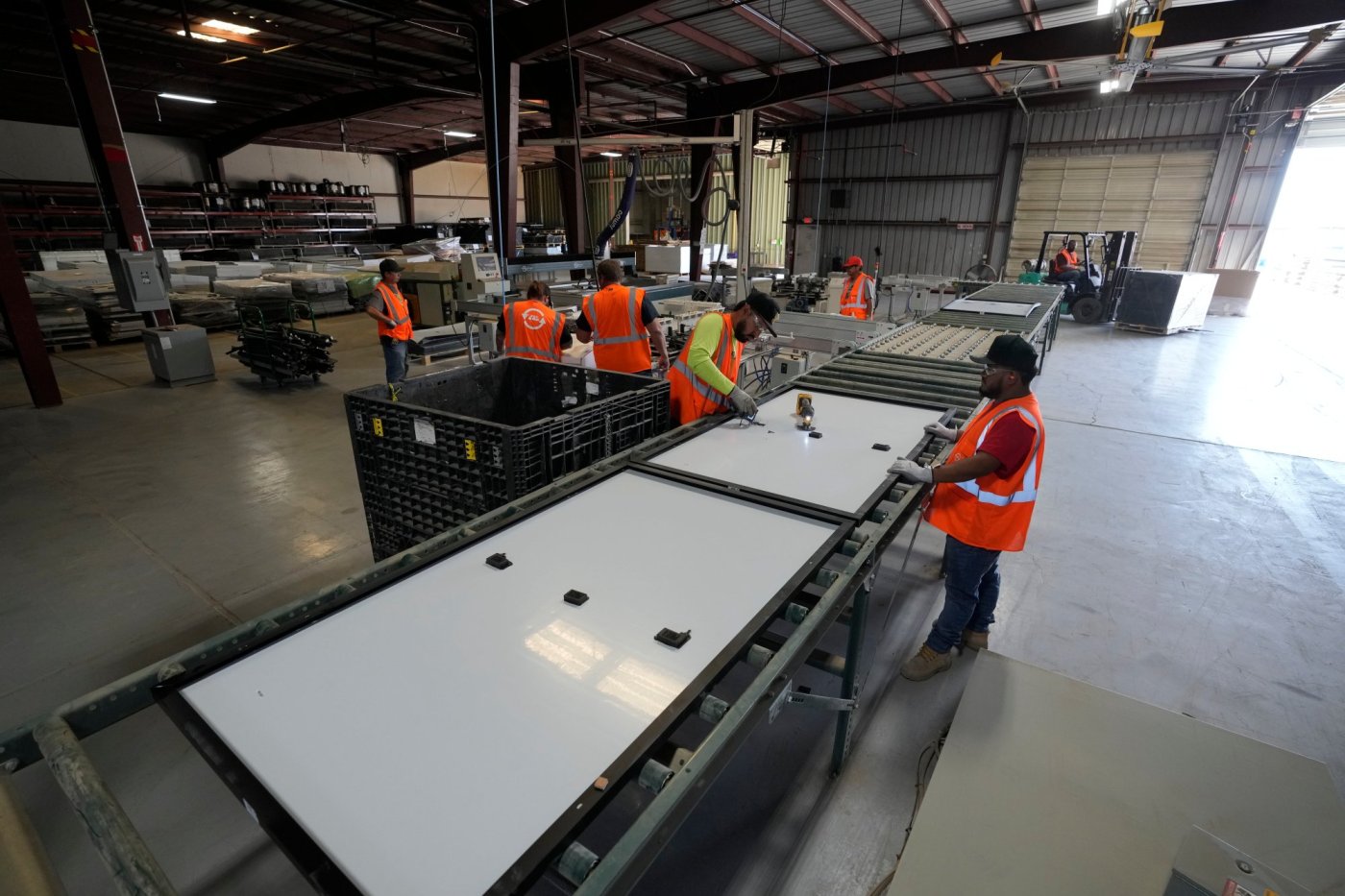As we transition to a green economy, we’re generating waste that, if we aren’t careful, isn’t so green. We looked at barriers and opportunities around three of the most challenging types of clean energy tech waste. This is one story in that four-part series.
Read the introduction here: What happens to old EV batteries, solar panels and wind turbines?
Read part one here: Recycling and ‘second life’ options keep retired EV batteries out of landfills
Read part three here: Old wind turbine blades get new spin, as businesses turn problem into opportunity
Picture a semi truck filled with old solar panels. Now picture panel-filled semis sitting bumper to bumper, across three lanes of traffic, filling every eastbound freeway in the United States.
That’s how many solar panels will be decommissioned across the country by 2050, according to Tom Hobbs, chief operating officer of Solar Recycling in Santa Ana.
Currently, around 9 million panels are retired each year, but Hobbs said there’s capacity to process only about 1 million of those panels at recycling companies like his, and the next closest facility is in Yuma, Ariz. That means nine-out-of-ten retired panels are going into landfills or sitting in storage, waiting for better solutions to become available.
“It’s not ‘the sky is falling tomorrow,’” Hobbs said. “But the sky is muddled, and we need to get it sorted before it falls.”
Recycled solar panels ready to be shipped are pictured at the We Recycle Solar plant in Yuma, Arizona on Dec. 6, 2023. (Photo by VALERIE MACON/AFP via Getty Images)
There are some promising developments in the works for solar panel reuse.
With so much federal money on the table through the infrastructure investment and inflation reduction acts, there are new incentives for companies to repair and repurpose old solar panels. Over the past 18 months, Arun Ramadass, with Scale Microgrids, said he’s received more calls than ever from companies such as Ontility, which are looking to buy used panels.
An option that excites Ramadass is taking panels that aren’t efficient enough for commercial-scale plants and using them for temporary power after natural disasters or in developing parts of the world.
When it comes to solar panel recycling, one hurdle is that, unlike EV batteries, these panels have only trace amounts of valuable materials, such as silver. What’s more, extracting those materials in a cost-effective way is, so far, close to impossible. Recyclers can sell around 80% of a panel’s reclaimed material, but it’s mostly low-value glass and aluminum.
To help make the process profitable, recyclers charge around $15 to accept a typical solar panel, well above the $3 to $7 charged to drop a panel at a landfill. For now, Hobbs said, the industry is relying on panel users — companies decommissioning solar farms and property owners dumping rooftop solar — to pay a little extra to be environmentally responsible.
Related Articles
Recycling and ‘second life’ options keep retired EV batteries out of landfills
What happens to old EV batteries, solar panels and wind turbines?
Deadly cold still grips much of the US but a thaw is coming
Federal rule forces oil states to cut planet-warming methane emissions
Letters: Pacifica Pier | Shifting costs | ‘Bidenomics’ contradicted | Trump opposition
“I would love to say that going green is the most economical way to do everything in the world, but it’s not,” Hobb said. “It’s just like eating organic. It’ll cost you more, but it’s better for you and for the planet.”
California also has strict rules around handling panels, which are considered toxic waste. Hobbs said those rules make it challenging for recyclers to get into the sector, so there’s been a push for some legislative relief.
Less than 16% of photovoltaic solar panels in use today were made using cadmium, per the Department of Enegy, which can leach into groundwater if not handled carefully. The other 84%, including most common rooftop solar panels, are crystalline silicon modules that Hobbs said are much less complicated to handle with much lower risks.
Assemblymember Chris Ward, D-San Diego, is pitching a bill that would require state regulators to cut some of the red tape and costs associated with handling solar panels. He also wants to create a solar panel end-of-life program, with requirements to use recycled components in new solar panels.
Both bills passed the Assembly and have until Aug. 31 to make it through the Senate. Gov. Gavin Newsom then has until Sept. 30 to decide whether to sign or veto any bills that make it to his desk.













+ There are no comments
Add yours